The first thing to remember is that 70% of native bees nest in tunnels in bare earth, not in cavities, so don’t be fooled into thinking that providing some bee houses is enough!
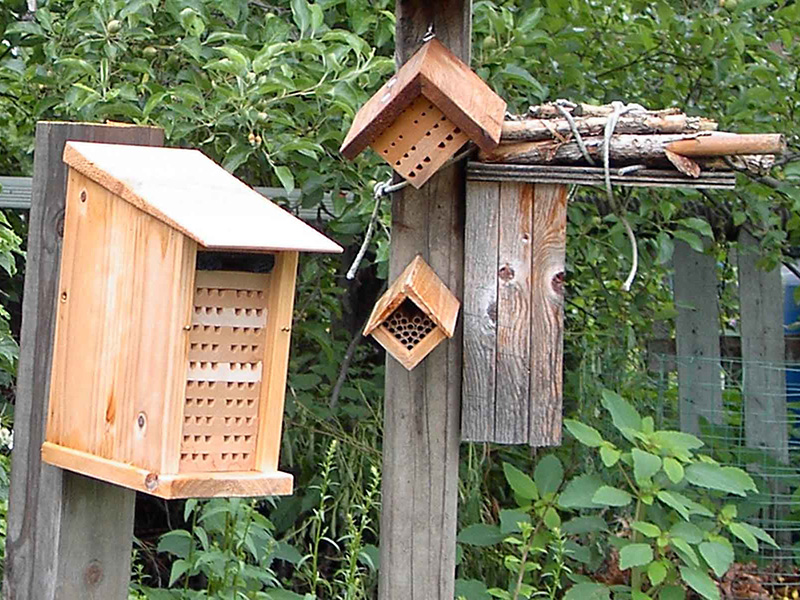
For a while, we had a number of bee houses. We learned a lot and enjoyed watching bees and wasps use them, but I suspect our yard probably has enough places for them to nest even without man-made houses.
BUT providing natural nesting habitat eliminates the need to keep the bee houses clean — not an easy task.
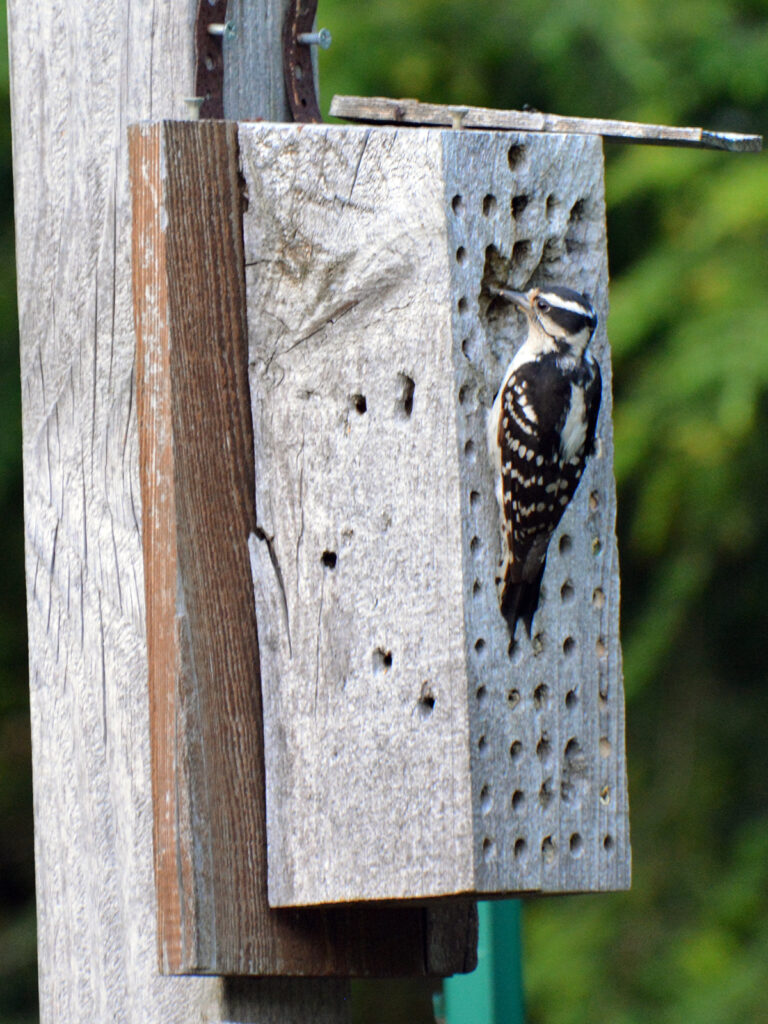
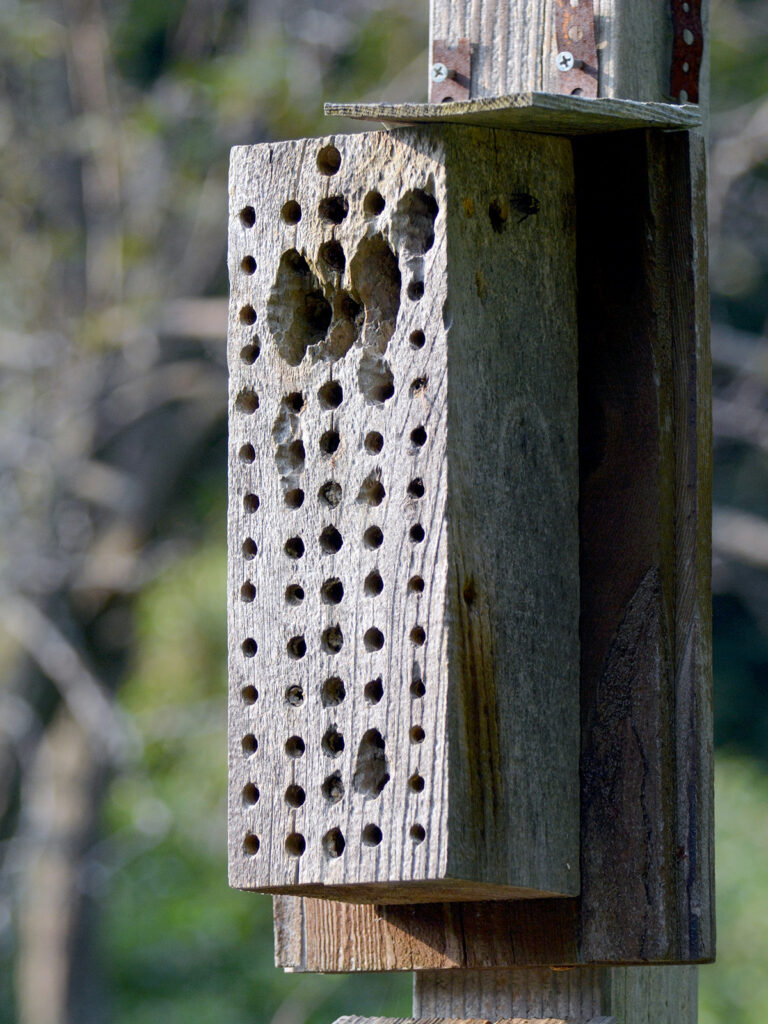
It also avoids concentrating all the larvae in one place, which can make them sitting ducks for predators, such as birds or chipmunks.
We’re happy to have switched to providing lots of natural places for nesting, but we did learn a lot when we used them. If you’re interested in trying some, here are our experiences with them.
Our bee house experiences
The introductory image was taken soon after we installed some of these bee houses, so the wood is still new-looking. The wood eventually weathered, though, so they blended in pretty well.
We’ve tried a variety of styles, just to see how each type worked.
Notice that these houses are about 5 inches deep. They need to be this deep since the depth affects the proportion of males and females produced. We tried to maximize the number of females since they are the ones that do the pollination work!
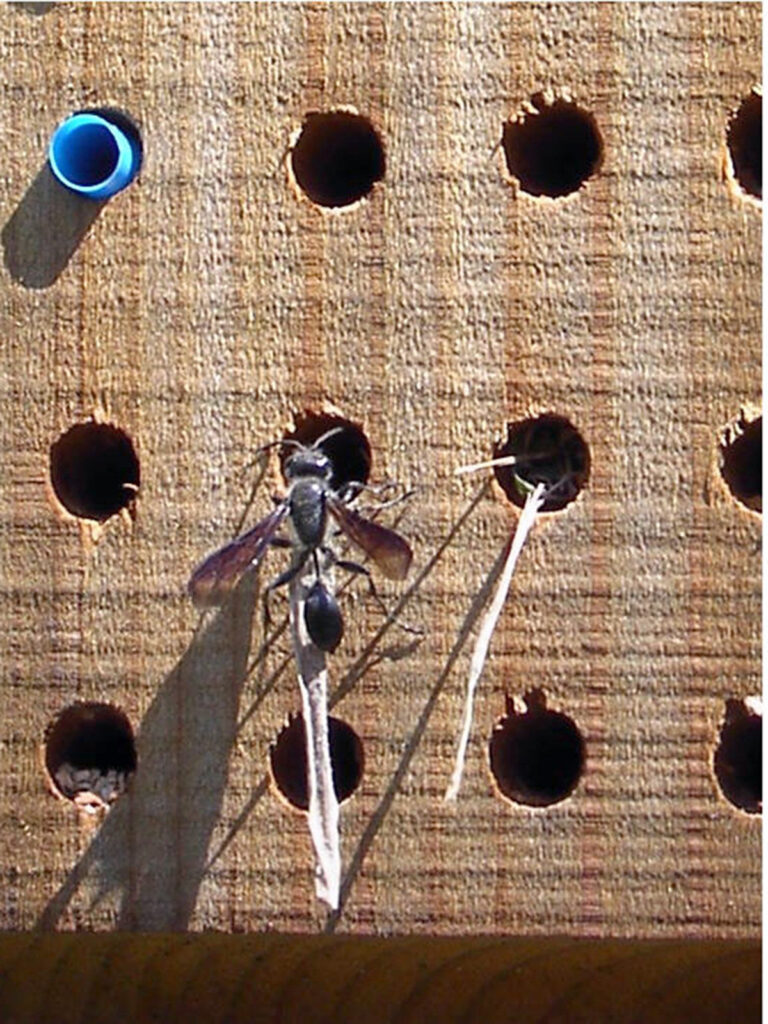
It was fascinating watching them lay their eggs in these bee houses. We saw quite a variety of bees and wasps, each with their own ways of provisioning the egg cells.
Homemade bee house
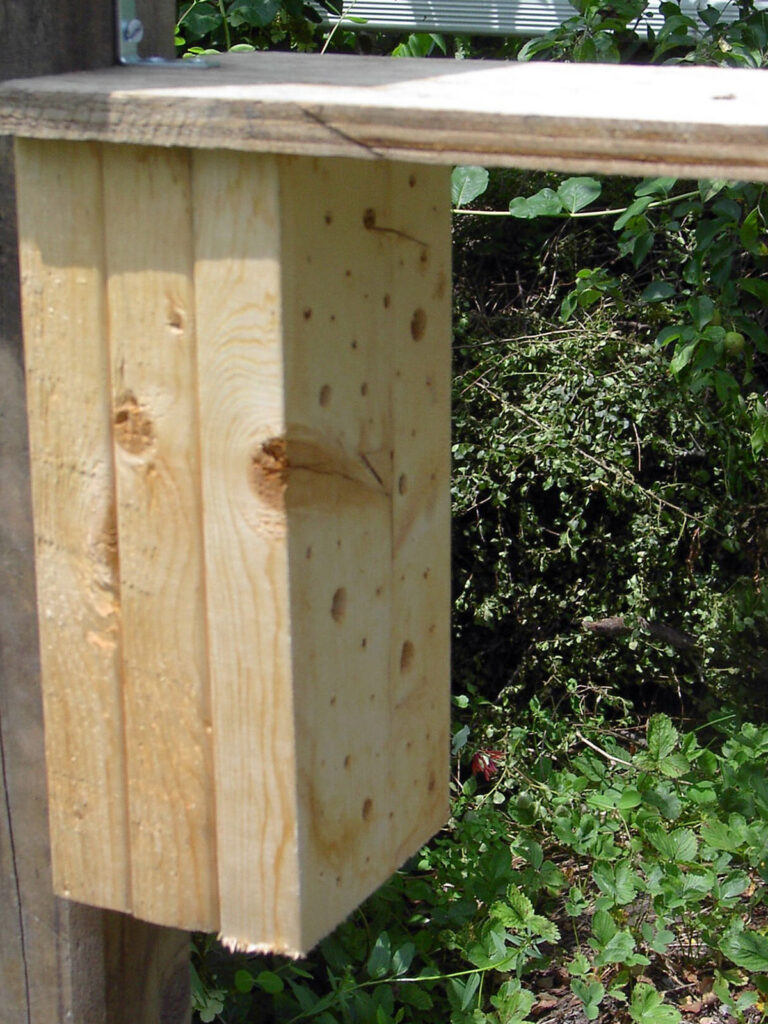
John drilled lots of different size holes (between 2 mm and 10 mm) into this assembled hunk of wood, making sure he bought only NON-pressure-treated wood, of course. (Pressure-treated wood is full of toxic chemicals.)
He nailed three 2x4s together and then drilled the holes almost, not completely, all the way through. It’s important to have a good drill bit so the insides of the holes are smooth. He added a roof to keep rain out.
Many different types of bees and wasps used these holes, each choosing the size hole they preferred. It was pretty successful, though it couldn’t be cleaned out as easily as commercial ones can be.
“Natural” nesting places can also be constructed.
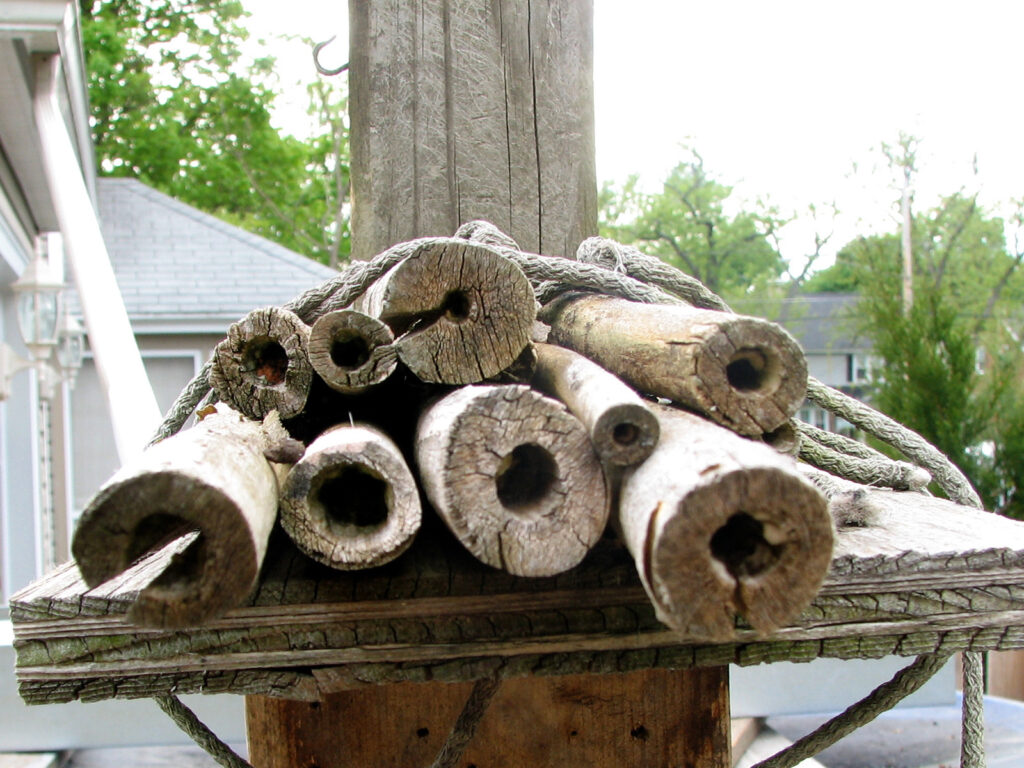
We tied these elderberry stems together for nesting space for bees. I imagine there are other stems that are naturally hollow, but we happened to have some elderberry prunings.
We cut each one above a plant node so there would be a natural end at the back so they weren’t just a hollow pipe.
Purchased
I liked this type of bee house. It was easy to clean because it disassembles, and it has four different hole sizes to accommodate different types of bees.
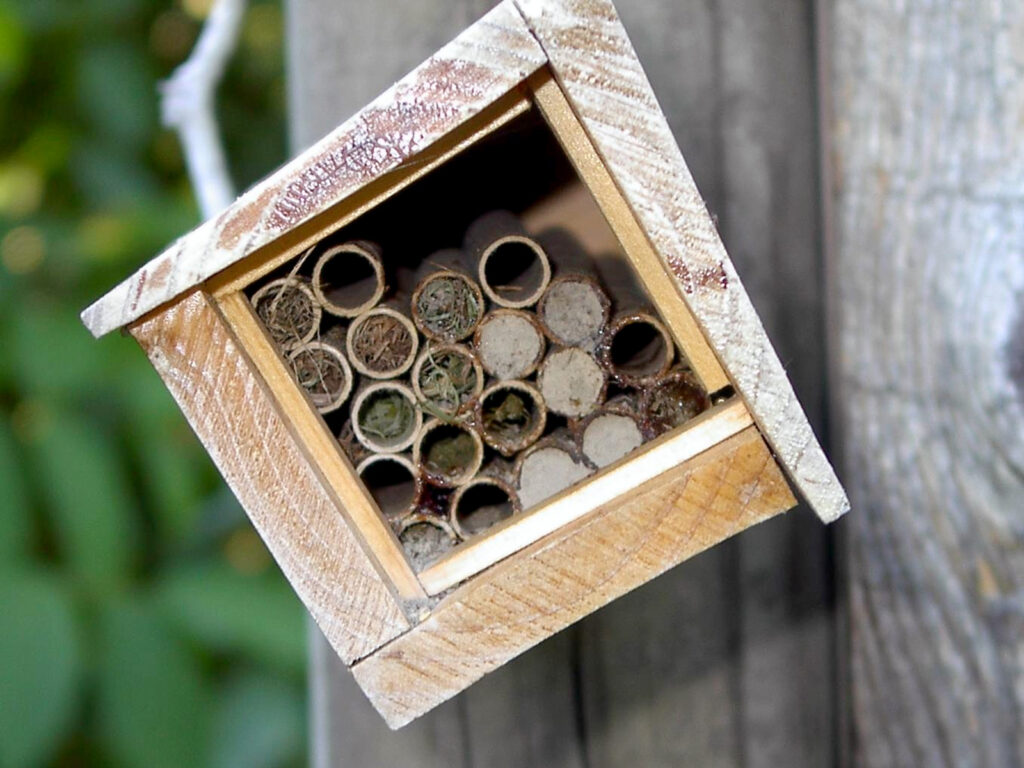
Some of these larvae (maybe even most?) overwinter as larvae and leave the next spring.
I hadn’t kept track enough to know how many batches of young are produced each season.
Here’s a different style (shown in introductory photo) that stacks individual nesting sections.
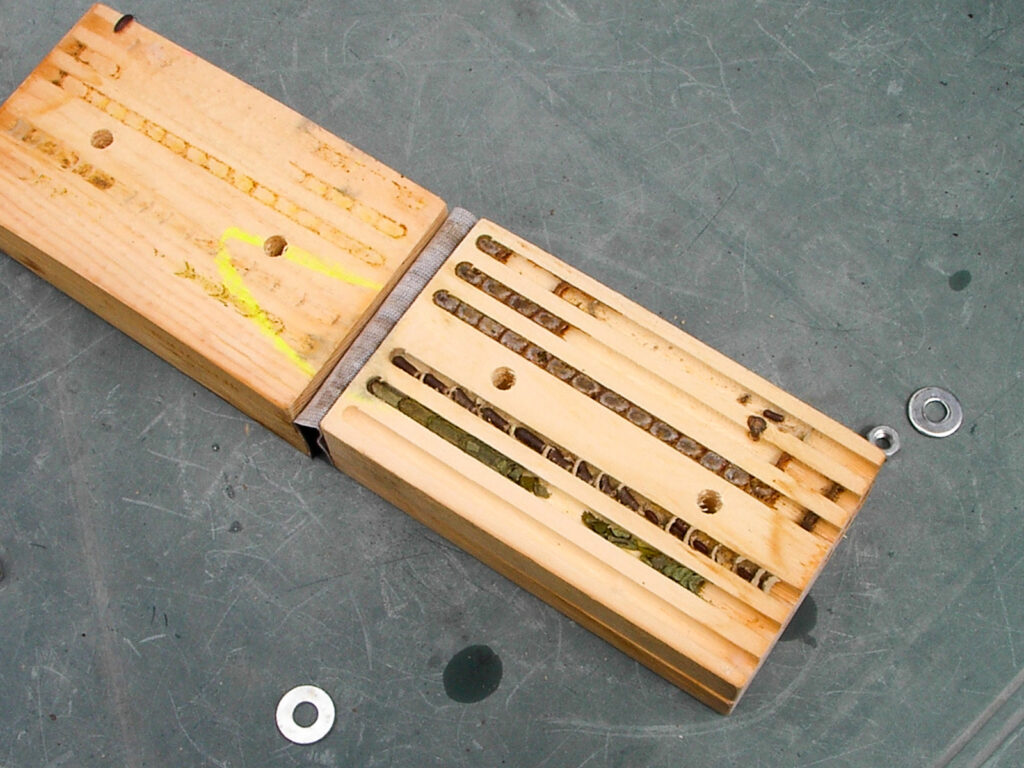
When we opened it up, we could see what goes on inside those houses. Different types of bees and wasps make different types of cells.
Note that these are solitary bees as opposed to social bees like bumble bees and honey bees. They fill up a channel with their eggs, provisioning each cell with what their larvae need. Once the channel is filled, that’s the end of their parenting responsibility.
They don’t stick around to defend a hive, which is the reason these native solitary bees aren’t aggressive.
Many individuals may nest “together” in one area — in this case, this bee house — which shows four different bees and wasps using it.
BUT these are solitary bees, not organized into a social unit with different roles, such as a honey bee hive or a bumble bee colony would have. They just happen to be nesting in proximity to one another.
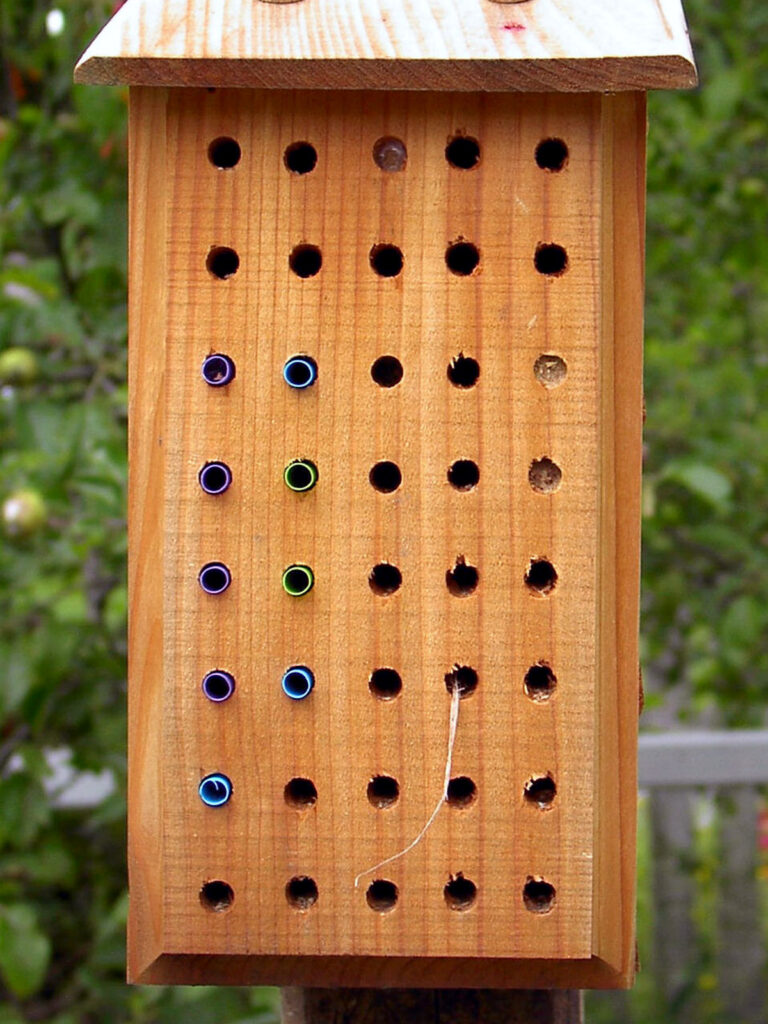
(But even though the social bumble bees nest in our yard, we’ve found them to be pretty docile and very easy to coexist with.)
This was another style of bee house we bought. It was plastic, which made it much easier to clean.
I’m not sure it was as appealing to bees to nest in this plastic, though, but we didn’t use it long enough to give it a good test.
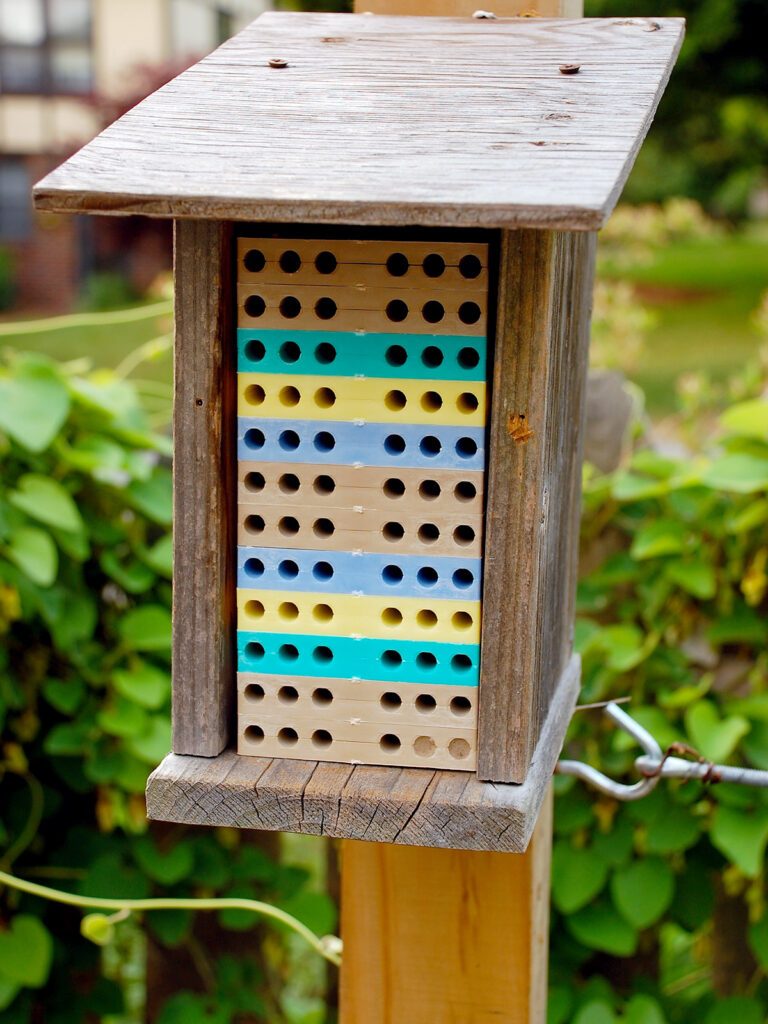
Less successful kinds
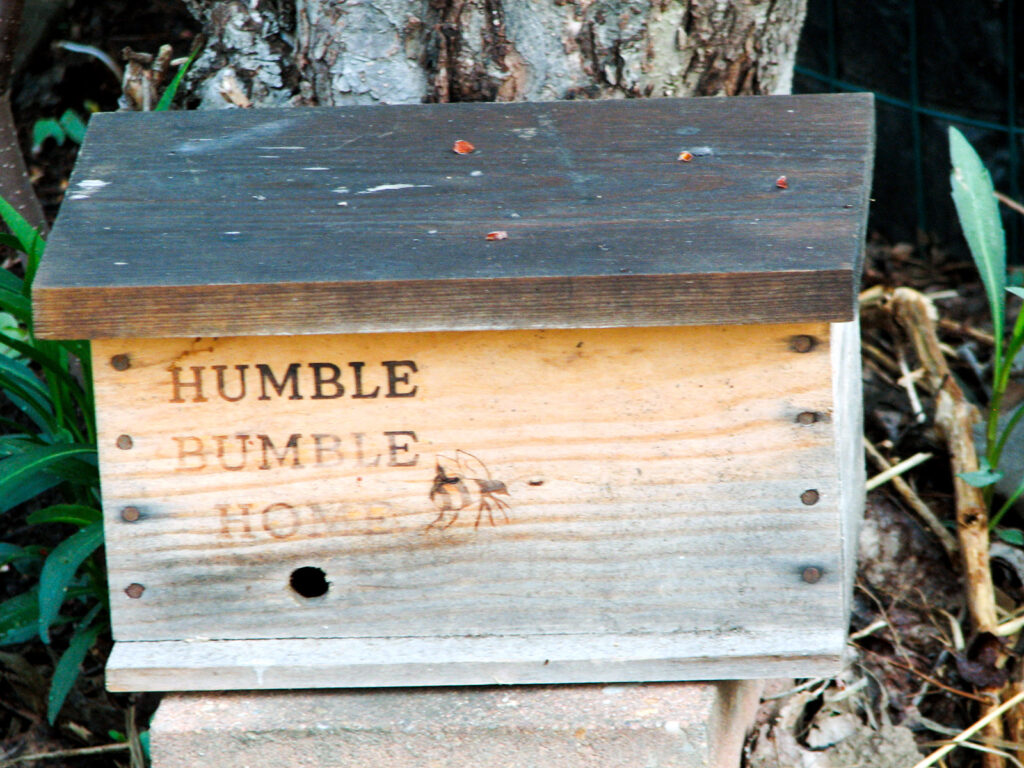
When we first became interested in bumble bees, we bought this somewhat pricey bumble bee house. Unlike solitary bees, bumble bees are social and nest in a colony, generally in the ground. It was a challenge to provide the right conditions for them to use this house.
It can be done I’m told, but it apparently involves capturing a queen and putting her in the house to get her interested. I’d rather provide the bare ground she’s looking for, so we haven’t pursued using this. But I would have loved to see how a social bee colony worked.
In the past, I favored this type because it’s so easy to clean and to get ready for the next year. I simply removed the straws and put the occupied ones in another container until they emerged, then replaced the house with clean straws.

Of course, one downside was that these custom straws are pretty pricey considering they’re single-use.
I did try to buy beverage-style paper straws, but they’re hard to find in any size. The size of the hole didn’t really matter since, unlike a farmer, we weren’t focusing on orchard mason bees, just any native bees, some of which are pretty small.
But they just don’t seem to make paper straws anymore. In fact, the teen at the register of a restaurant supply store didn’t believe there could even be such a thing — “But paper would get wet!” she patiently explained to me, thinking this old lady was a little confused. Clearly, she couldn’t conceive of a time before plastic was invented!
Anyway, I say that I used to prefer these until I spoke with an entomologist who considered these to be a “sink” rather than a “source” for bees in my yard. (In other words, they wouldn’t necessarily be able to complete their life cycle, and thus the eggs would be wasted.)
Now for the life of me I can’t remember her reason, just that whatever her reason, it made sense to me at the time, so this was one more reason we decided to just provide natural nesting areas.
Resources
- Xerces Society:
- EcoBeneficial:
- Bee Hotels or Natural Habitat? – Kim Eierman comes down on the side of natural habitat, a conclusion we reached as well
Bee house plans
IMPORTANT: Make sure your drill bit is in good shape so the holes are smooth.
AND be sure to use NON-pressure-treated lumber!
- Ecological Landscape Alliance:
- The Xerces Society:
- Growing a Greener World:
- Maine Cooperative Extension:
- Understanding Native Bees, the Great Pollinators: Enhancing Their Habitat in Maine (bee house directions at the bottom of the page)
- Resonating Bodies: Building Houses for Native Bees
